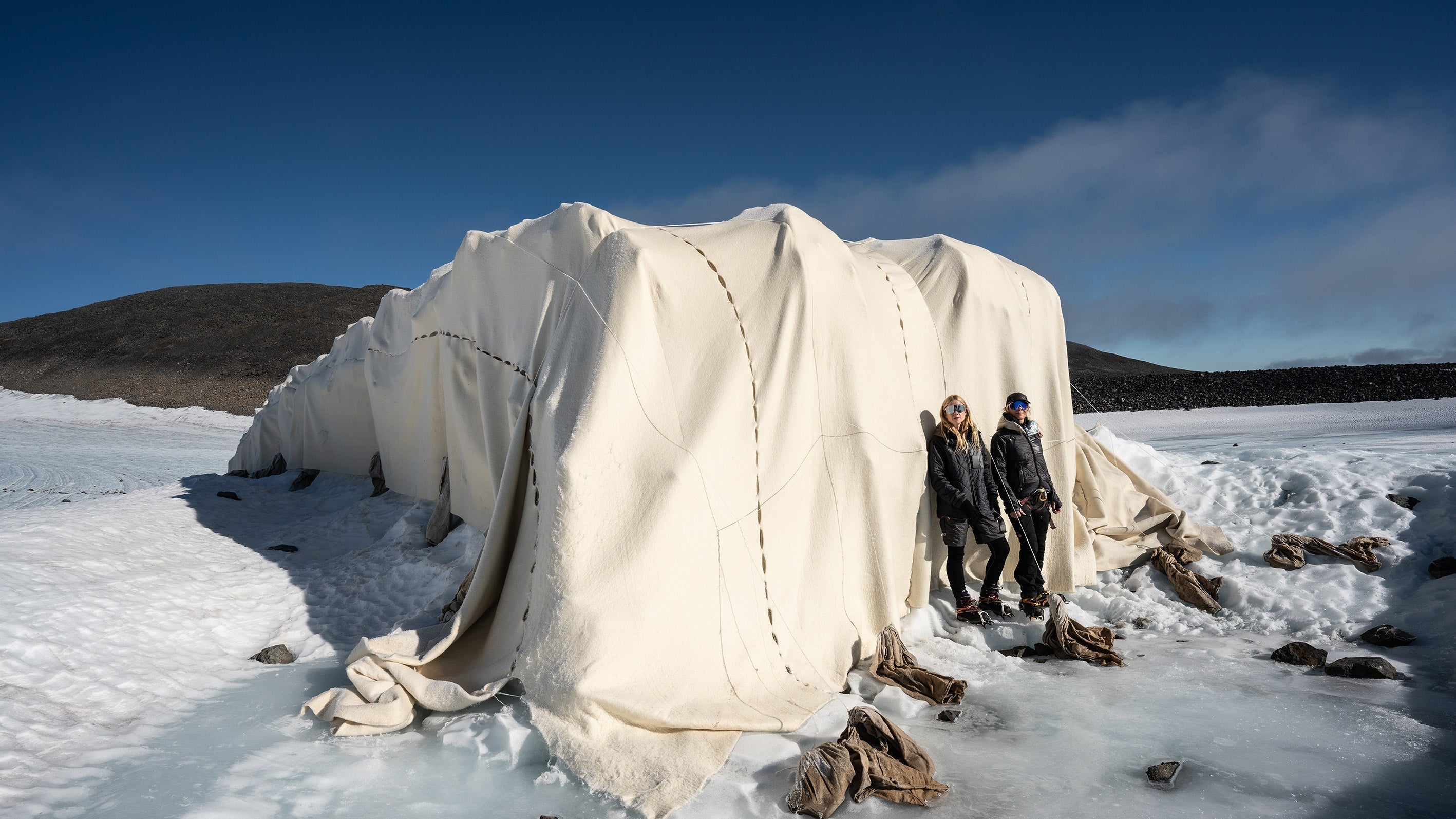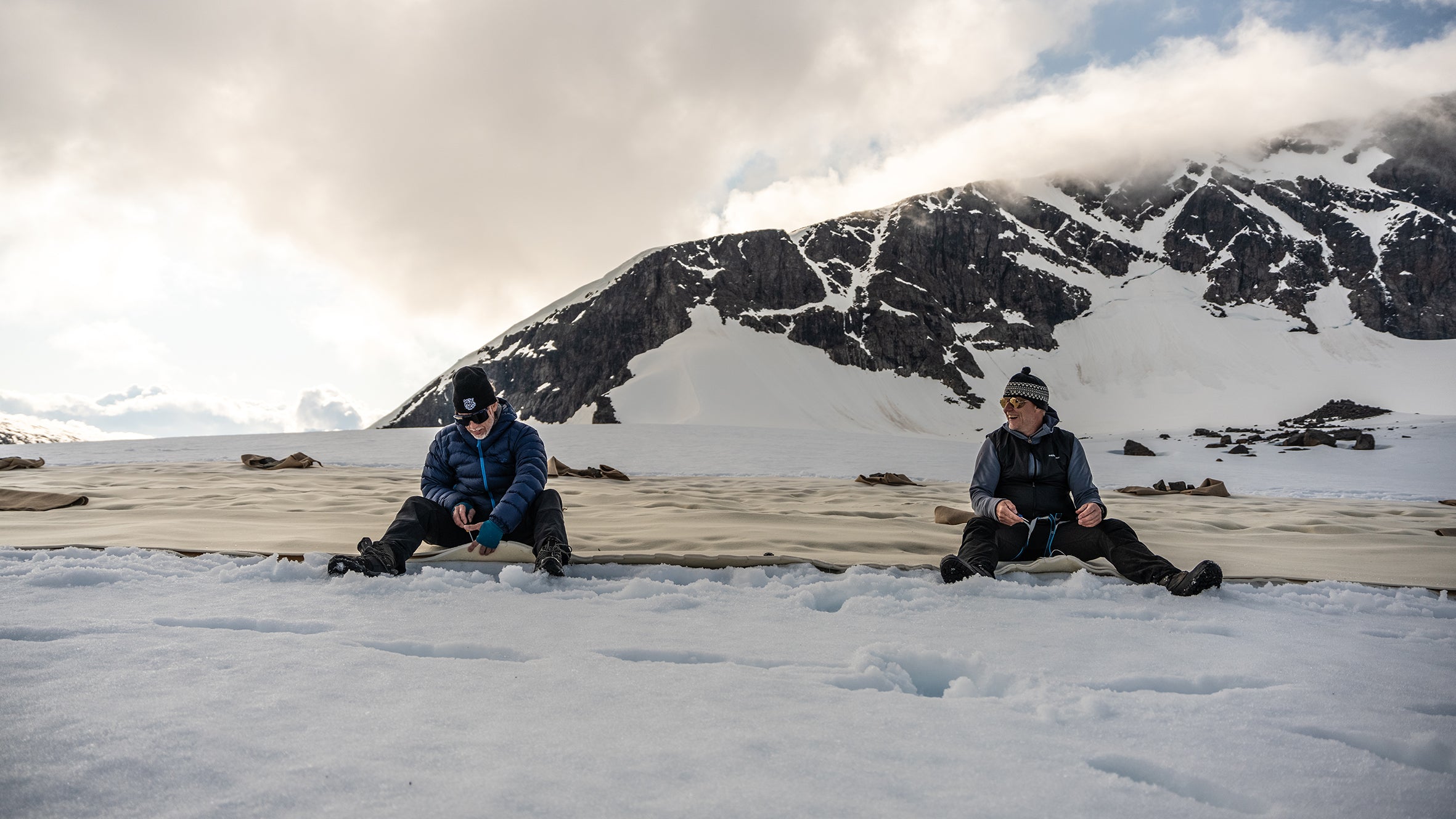Article: September 2025 – AFTER A RECORD-WARM SUMMER

September 2025 – AFTER A RECORD-WARM SUMMER
The summer has been unusually warm in northern Sweden this year. Much of the glaciers have melted, but beneath our cover, a substantial amount of blue ice remains. We head up in September, as summer ends and autumn takes over. Now the glacier can manage on its own, and we can roll up the blankets and measure how much of the glacier was preserved this summer.

Train service to Kiruna was cancelled due to storms and damage to the tracks. So this time, we had no choice but to drive electric cars all the way to Kiruna. It was a long 17-hour journey. We zipped through Sweden, the landscape growing more autumnal the further north we travelled.

We arrived early in Nikkaloukta and had time for a bit of breakfast before starting the day’s trek towards the Kebnekaise Mountain Station.

We reached the station in the afternoon and began preparing for the next day's work — testing crampons, repacking bags, and planning the tasks on the glacier.

We also made sure to carb-load. Mix business with pleasure...

The next day, we woke up early to begin our hike along Kebnekaise’s eastern trail toward Björling’s Glacier, where the Glacier Blanket is located.

In Jöckelbäcken, some sections are quite steep, but it helps to turn around now and then to enjoy the magnificent view — it makes everything feel easier. We gain a total of 1,800 meters in elevation.

The final ascent is a (terribly rocky) moraine. Once we crest the ridge, Björling’s Glacier spreads out before us, and we can see the Glacier Blanket still proudly standing after the warm summer.
It looks beautiful this year. No tears or dirt. It almost shines in the strong sunlight, which we’re lucky to have with us all day.

Photo: Otto Blücker
We put on harnesses and crampons and rope ourselves together before stepping onto the glacier. At this time of year, all the crevasses and melt holes are visible, but we want to be on the safe side to ensure no one falls into a crack without a way to get back out.

Before we start taking everything down, Oskar and John measure this year’s results: about 4 meters of ice over a 200 m² area have been preserved under the blanket!
They also record the exact coordinates so that next year we can place the blankets in exactly the same spot.

Then it’s time for the real work to begin — unstitching all the blankets and rolling them up. They are long and heavy. If you want to practice teamwork, this is a perfect way to do it.


Spirits are tested as everyone starts getting hungry and tired. Glacier ice is quickly melted to boil water for freeze-dried meals and coffee. Everything tastes great in the mountains — even the most unlikely combinations, which would otherwise be completely unappetizing, go down easily. How about rosehip soup, pasta, and crispy onions… a tip for your next mountain adventure.

The work continues all day as we unstitch, roll up the blankets, and then drag them a few kilometers down to the moraine. There, we store them safely for the winter.

Photo: Robin Danehav
The glacier we managed to save may feel small in the grand scheme of things, just like you feel small among all the high mountains. You get the sense that we don’t have much say — nature makes the rules. Still, we’re happy that we can preserve a part of the winter and raw glacier with the Glacier Blankets. If nothing else, it helps to highlight how fast the melting is progressing — and one day, our section of the glacier might be the only one left.
We won’t stop rolling out wool. We’ll be back next year!


